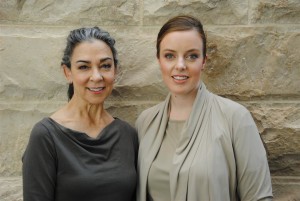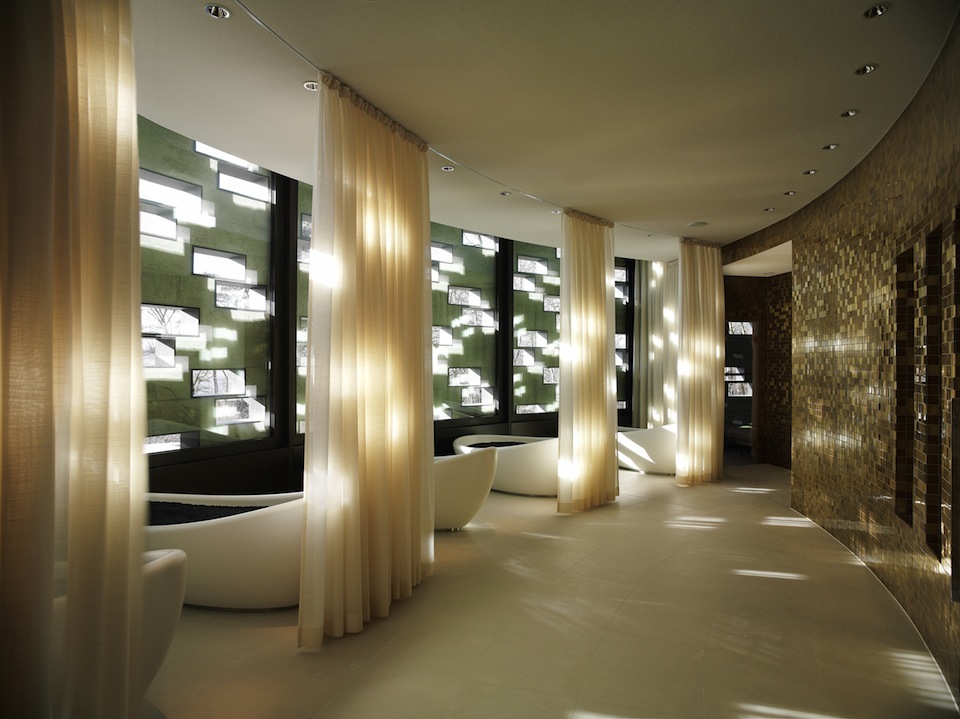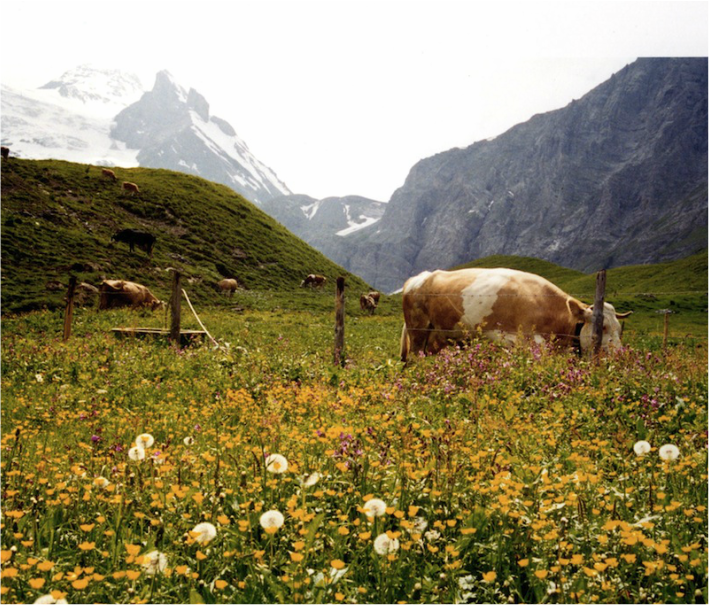
By Shari Mycek
(This article first appeared in Insiders Guide to Spas)
When reaching out to Sylvia Sepielli, owner of SPAd (Sylvia Planning And design) to reflect on a spa in Switzerland that she developed years ago, we fittingly found her sitting on the deck of her room (#8307) at The Dolder Grand, overlooking flowering lilacs, spring-green mountains, and one of her favorite art pieces there: “Lady with Fruit.”
The spa designer extraordinaire has been returning to The Dolder twice a year since opening the spa seven years ago—continuing to work with the spa team fine-tuning services and offerings. In creating the spa, a stunning blend of glass and water features, Sepielli—in the style she footprinted and has since made industry-famous—drew upon the authenticity of the region.
“Switzerland is known for its majestic mountains,” she says. “Traveling the country, I was most inspired by the space between the mountains, by the canyons, and specifically by the source of water deep within those canyons. The result became an interpretation of that with a quiet meditation space that follows a path to a stunning pool within an interpretive ‘canyon’ that expands with a two-story glass view of Lake Zurich.”
The “co-ed zone,” one of Sepielli’s (and guests’) favorite corners of the spa, features a warm pebble bath—used as a “relax lounge”—between the steam, sauna, and, yes, snow room. “You wriggle into the warm pebbles, it‘s very cozy,” she says.
Among the products, Sepielli selected for use in treatments are: La Prairie, “the preeminent Swiss line;” Amala, “because it is a NaTrue-certified line;” and Kerstin Florian (also an amenity in guests’ rooms) “because it fulfills every need in a full-range line.”
Because Sepielli has spent (and continues to spend) so much time in Zurich, we asked for her “must-do” insider recommendations both in and outside The Dolder Grand.
Outside the hotel:
•Hiltl – The “oldest vegetarian restaurant in the world” founded in 1898. “Very delicious and fun experience.” www.hiltl.ch/en/
•Seminarerum Gallery – “I’ve gotten to know the owner of the gallery, Irene Preiswerk, a dynamic woman who has mentored many artists and continues to put together significant shows. www.seminarerum.ch/
•Chocolate – “A must-try is Sprüngli’s“ chocolate of the day – it’s freshly made and should be savored immediately. Also, at the back of the Lindt store at Zurich airport, and treat yourself to a hot strong coffee with liquid-chocolate – WELL worth the calories.
•Apennzell – 40 minutes outside Zurich is an old town called Appenzell, known for its many varieties of apples. There is a trail that goes from apple hut to apple hut visiting the different growers, also known for making liqueurs from a variety of 42 herbs.
Within the hotel:
•Chocolate chef, Mr. Carletto, at The Dolder, is a true master and has a sassy twist on some of the classic pieces. I finally found his small kitchen, “the chocolate room,” tucked away from the other kitchens deep in the heart of the house.
•Looroenkopfturm – Go behind The Dolder and start walking into the forest. Arrange to go with a fitness instructor, or simply ask any of the locals who run, walk their dogs and bike (at all times of day or night), which path leads to “Loorenkopfturm.” It’s a wooden tower, 32-meters high (and about 40 minutes). The view above the tree tops is stunning.
(This article first appeared in Insiders Guide to Spas)
When reaching out to Sylvia Sepielli, owner of SPAd (Sylvia Planning And design) to reflect on a spa in Switzerland that she developed years ago, we fittingly found her sitting on the deck of her room (#8307) at The Dolder Grand, overlooking flowering lilacs, spring-green mountains, and one of her favorite art pieces there: “Lady with Fruit.”
The spa designer extraordinaire has been returning to The Dolder twice a year since opening the spa seven years ago—continuing to work with the spa team fine-tuning services and offerings. In creating the spa, a stunning blend of glass and water features, Sepielli—in the style she footprinted and has since made industry-famous—drew upon the authenticity of the region.
“Switzerland is known for its majestic mountains,” she says. “Traveling the country, I was most inspired by the space between the mountains, by the canyons, and specifically by the source of water deep within those canyons. The result became an interpretation of that with a quiet meditation space that follows a path to a stunning pool within an interpretive ‘canyon’ that expands with a two-story glass view of Lake Zurich.”
The “co-ed zone,” one of Sepielli’s (and guests’) favorite corners of the spa, features a warm pebble bath—used as a “relax lounge”—between the steam, sauna, and, yes, snow room. “You wriggle into the warm pebbles, it‘s very cozy,” she says.
Among the products, Sepielli selected for use in treatments are: La Prairie, “the preeminent Swiss line;” Amala, “because it is a NaTrue-certified line;” and Kerstin Florian (also an amenity in guests’ rooms) “because it fulfills every need in a full-range line.”
Because Sepielli has spent (and continues to spend) so much time in Zurich, we asked for her “must-do” insider recommendations both in and outside The Dolder Grand.
Outside the hotel:
•Hiltl – The “oldest vegetarian restaurant in the world” founded in 1898. “Very delicious and fun experience.” www.hiltl.ch/en/
•Seminarerum Gallery – “I’ve gotten to know the owner of the gallery, Irene Preiswerk, a dynamic woman who has mentored many artists and continues to put together significant shows. www.seminarerum.ch/
•Chocolate – “A must-try is Sprüngli’s“ chocolate of the day – it’s freshly made and should be savored immediately. Also, at the back of the Lindt store at Zurich airport, and treat yourself to a hot strong coffee with liquid-chocolate – WELL worth the calories.
•Apennzell – 40 minutes outside Zurich is an old town called Appenzell, known for its many varieties of apples. There is a trail that goes from apple hut to apple hut visiting the different growers, also known for making liqueurs from a variety of 42 herbs.
Within the hotel:
•Chocolate chef, Mr. Carletto, at The Dolder, is a true master and has a sassy twist on some of the classic pieces. I finally found his small kitchen, “the chocolate room,” tucked away from the other kitchens deep in the heart of the house.
•Looroenkopfturm – Go behind The Dolder and start walking into the forest. Arrange to go with a fitness instructor, or simply ask any of the locals who run, walk their dogs and bike (at all times of day or night), which path leads to “Loorenkopfturm.” It’s a wooden tower, 32-meters high (and about 40 minutes). The view above the tree tops is stunning.


 RSS Feed
RSS Feed